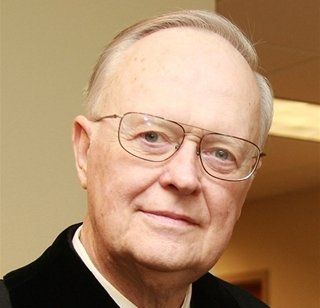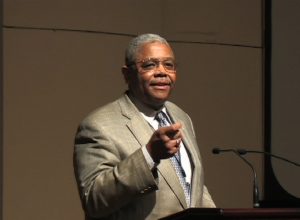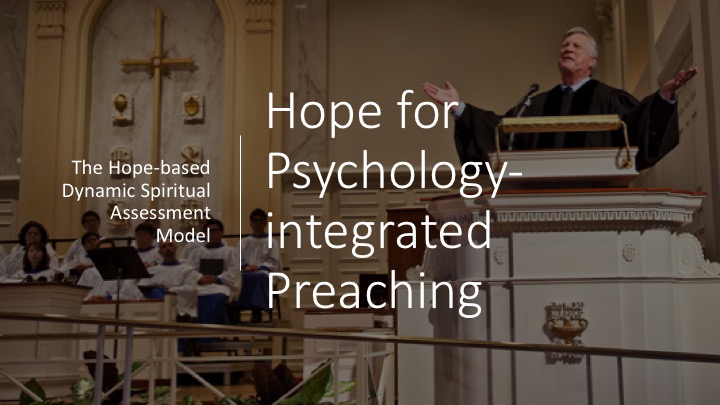Arguably, preaching is the most popular medium for pastoral care in churches.[1] Accompanying this central role of care is a deep commitment to its effectiveness, particularly in relating the hope of Jesus Christ to the masses. This commitment has led to significant integration of homiletics with other disciplines in seminaries. One field of study though seems to have been left out of the conversation almost entirely—psychology.
The evidence is somewhat damning when considering a recent survey of the top ten textbooks used among preaching professors at the thirteen United Methodist theological schools. In January 2018, I reached out to their professors of preaching or homiletics, twenty in total, requesting their top ten textbooks utilized in the preaching classroom. Of the twenty professors, ten responded.[2] Of the fifty-one textbooks offered,[3] only four engaged significantly with psychology.[4] The rest had limited to no engagement. Worse, some authors even warn against excessive use of psychology in sermons.
These survey results indicate psychology is largely missing from the seminary’s preaching classroom. Although pastors might receive psychological education and integration in other classroom environments, especially pastoral care classes, its absence in preaching classes is costly. It limits the pastoral ability to understand and meet the psychological needs of a faith community through the sermon moment, or, in the words of Edgar Jackson, church members will resultantly accuse the preacher of “always scratching us where we don’t itch.”[5]
In an atmosphere of steady church decline in the United States, it is all the more vital that pastors use every resource available, including psychology, to faithfully serve their churches, support Christ’s kingdom, and stay contextually relevant.[6]
Peter Clark’s Hope-based Dynamic Spiritual Assessment Model
How does one confront this inertia of ignorance concerning psychology-integrated preaching? How do we present complex concepts to pastors who may likely have limited time, focus, and energy? I contend that hope for psychology-integrated preaching for pastors is found in Peter Yuichi Clark’s Hope-based Dynamic Spiritual Assessment Model.
Clark is the Director of Spiritual Care Services at University of California San Francisco (UCSF) Medical Center and UCSF Benioff Children’s Hospital. An ordained American Baptist minister and a board-certified chaplain with the Association of Professional Chaplains, Clark obtained his Ph.D. in religious studies at Emory University and now teaches pastoral care at the American Baptist Seminary of the West.[7]
Clark’s innovative, practical method for personality theory-based care assessment and intervention was first presented in his article, “Tending to Trees of Life…and Hope” in the Journal of Supervision and Training in Ministry (JSTM).[8] The model’s goal is to give spiritual caregivers a method for discerning through a person’s relational style their sense of identity, particularly their unique threat to hope, in order to intervene appropriately with the goal of restoring hope to the individual. Clark’s spiritual assessment model has been taught and practiced in various clinical spiritual care settings and has proven successful in addressing the spiritual needs of those served.Although not originally designed for preaching, this model could help fill the psychology-shaped vacuum in preaching among pastors.
Accessibility of Model to Preaching Approaches
In general, Clark’s Hope-based Dynamic Spiritual Assessment Model is an excellent resource for the pastor’s integration of psychology with preaching. One of the most compelling features of this model is its implicit grounding in current pastoral approaches to preaching.
|
Current Pastoral Approaches to Preaching That Correlate with Assessment’s Three Pastoral Approaches |
|||
| Assessment’s call to challenge the apathetic (Prophet) | Assessment’s call to guide those in despair (Shepherd) | Assessment’s call to comfort and uplift those in despair those ashamed (Priest) | |
| Lenora T. Tisdale, Prophetic Preaching: A Pastoral Approach (Louisville: Westminster John Knox Press, 2010). | William E. Hull, Strategic Preaching: The Role of The Pulpit in Pastoral Leadership(Danvers, MA: Chalice Press, 2006). | Edward P. Wimberly, Moving from Shame to Self-Worth: Preaching & Pastoral Care, (Nashville: Abingdon Press, 1999). | |
| Walter Bruggemann, The Practice of Prophetic Imagination (Minneapolis: Fortress Press, 2012). | Thomas H. Troeger, Preaching While the Church is Under Reconstruction: The Visionary Role of Preachers in a Fragmented World (Nashville: Abingdon Press, 1999). | Brent A. Strawn, “Trauma, Psalmic Disclosure, and Authentic Happiness,” in Bible through the Lens of Trauma, ed. Elizabeth Boase and Christopher G. Flechette (Atlanta: Society of Biblical Literature, 2016), 143-60. | |
Not only is the assessment rooted in these current pastoral approaches but also, dialogue between these two disciplines is fruitful in illuminating a fuller capacity for pastoral care through preaching.
Interdisciplinary Conversation…
…between prophetic preaching and “Prophet” spiritual care approach

Dr. Leonora Tisdale
Clement-Muehl Professor of Homiletics at Yale University https://divinity.yale.edu/faculty-and-research/yds-faculty/leonora-tubbs-tisdale
For instance, Lenora Tisdale adds to the conversation a variety of tested strategies and forms to the assessment’s prophetic pastoral stance, helping to actualize the assessment’s prophetic intervention in preaching.[9] She also expands this intervention to include confrontation of societal structures and norms.[10]
Conversely, the incorporation of the model, especially its understanding of the psychological condition of those needing confrontation, increases the potential for more empathetic and transformative intervention of those in the pews.
…between strategic preaching and “Shepherd” spiritual care approach
Similarly, Clark contributes to William Hull’s understanding of strategic

Dr. William Hull (deceased)
Theologian & Provost at Samford University https://www.samford.edu/news/2013/Dr-William-Hull-Theologian-and-Former-Samford-Provost-Dies-at-83
preaching by clarifying the relational tendencies of those in need of this preaching approach, namely a tendency to distrust the world and avoid decision-making. Even though Clark designed the model for assessment of individuals, finding these tendencies consistently within a congregation offers credence to strategic preaching. Clark provides visible markers indicating when to practice strategic preaching more frequently. On the other hand, Hull provides a comprehensive hermeneutic and homiletic framework for the practice.[11]
Hull especially gives Clark’s model credibility among Christian leaders by providing significant biblical and theological grounding for Clark’s pastoral stance of guidance. For example, he argues that the New Testament presents the Church as a pilgrim people, moving “…from darkness to light (1 Pet. 2:9), from hostility to peace (Eph. 2:12-14), from death to life (Rom. 8:2-11).”[12] For Hull, theologian Rudolf Bultmann in his Theology of the New Testament reinforces this movement towards a new age for the Church with his concept of “betweenness,” a transitional state for every Christian between the salvation already received and that which is yet to be obtained.[13] For Hull, strategic preaching is an essential catalyst for the Church to move forward on God’s redemptive journey. He identifies God’s future promises as the primary motivation utilized in strategic preaching for this ecclesial movement, promises reaffirmed in God’s presence and Christ’s example.[14]
…between self-worth preaching and “Priest” spiritual care approach
Finally, dialogue between Wimberly and Clark’s pastoral approaches to shame add considerable depth and perspective to the other. Much like Hull did for the second assessment of the model, Wimberly provides a biblical foundation for a supportive pastoral stance. In Part One, he points to Jesus as an exemplar for handling his own shame originating from temptation in the wilderness,[15] cultural devaluation, and felt divine abandonment.[16] In Part Two, Wimberly demonstrates how Jesus handles the shame of others, such as that of the centurion’s servant, the woman anointing Jesus’ feet, and the Gerasene demoniac.[17] In every example, he not only examines the biblical narrative’s theme of victory over shame, but also offers a complementary contemporary story that reveals a similar victory over shame. In Part Three, Wimberly even explores the theme of shame in relation to Jesus’ parables,[18] showing how the new reign of God was centered on a “non-honor-and-shame-based paradigm with an egalitarian ethic.”[19] This rich engagement with Scripture by Wimberly delivers a biblical lens through which to understand the model’s third assessment, in turn demonstrating its relevance and credibility to pastors who value biblical methods for ministry. Another helpful contribution Wimberly makes to the third assessment is his promotion of variety in intervention pathways. Though storytelling is generally his means of offering encouragement and comfort to the ashamed, he gives a plethora of stories from which to choose, both biblical and personal. Further, he trains the pastoral caregiver in how to tell these stories in such a way that leads to self-worth in those receiving care. In brief, Wimberly enriches the assessment model with a biblical, practical, and creative spirit.

Dr. Edward Wimberly Jarena Lee Professor of Pastoral Care & Counseling Interdenominational Theological Center http://cretscmhd.psych.ucla.edu/nola/volunteer/PlenaryStills.htm
The assessment model also contributes to Wimberly’s pastoral approach, especially in its additional intervention suggestions. Whereas Wimberly sees storytelling as the primary means of support to those ashamed, Clark sees value in honoring the story of those ashamed. To illustrate, Clark shares about a time in which he celebrated the emotions of someone he cared for who was ashamed of her anger and frustration.[20] He encouraged her to not hide these emotions but to use them in her relationships.[21] In doing so, he helped reveal her self-worth and belonging in community. Clark’s approach persuades preachers to consider how they honor the stories within their congregation. By blessing and even celebrating the sometimes-hidden goodness within a congregation during the sermon, preachers are reinforcing congregants’ value in the eyes of the preacher, their community of faith, and God.
Assessment’s Other Benefits to Preaching
- The assessment model also succeeds in giving balanced attention to each pastoral intervention.
- It is also accessibly functional for the “everyday” pastor, using vernacular emotional and religious language likely already known by most congregational pastors.
- Another strength of Clark’s model is its simplicity of use. Pastors must only be able to recognize the particular threat to hope each individual in need is presenting and the way to bring hopeful intervention to each.
Course of Action
The Hope-based Dynamic Spiritual Assessment Model can act as a useful bridge between psychology and preaching, even in the North Alabama Conference of The United Methodist Church (UMC) in which I currently serve.In 2017, my Conference prioritized church health, with an emphasis on the spiritual health of its pastors.[22] This prioritization of pastoral spiritual health translated into superintendents from each district inviting pastors to participate in L3 Groups. L3 Groups are small groups of pastors within The UMC North Alabama Conference who meet monthly to share in loving, learning, and leading, hence the program’s name.[23] L3 participating pastors voluntarily chose to participate both in the process and the particular group, though one pastor was selected by the district superintendent to lead each group in organization and direction.
Specifically, I will design a curriculum for my L3 small group to be used during our corporate “Learning” moments. This curriculum will involve four, one-hour teaching units in which fellow pastors will gain a general understanding of the Hope-based Dynamic Spiritual Assessment Model, its benefits in preaching, and its application in preaching in their particular contexts.[24] Upon successful completion, the expected outcomes will include the following:
Short-term Outcomes:
- L3 group implements the spiritual assessment model in their regular preaching
- L3 group intentionally engages this psychological method for preaching effectiveness
- L3 group’s psychology-integrated preaching cultivates healthier congregations in their contexts and reaches new persons for membership
- L3 group becomes promoters of psychology-integrated preaching within the Conference
Desired Long-term Outcomes:
- Other L3 groups within the Conference pursue training in this curriculum
- Curriculum becomes endorsed and promoted by Conference leadership
- Entire Conference intentionally engages psychological method for preaching effectiveness
- An increase in health and growth occurs among Conference churches
Curriculum
Unit 1: Why Bother with Psychology in Preaching?
This lesson motivates the pastors in the L3 group to learn about psychology, especially within the framework of the Hope-based Dynamic Spiritual Assessment Model. Although the lesson allows space for pushback, it is necessary for them to understand the potential challenges when psychology is not a prevalent influence in preaching as well as the potential benefits when it is applied. Finally, pastors need to generally grasp the assessment model’s three threats to hope and their respective pastoral stances as a foundation for more in-depth exploration and contextual application of the assessment model in the proceeding units.
Unit 2: Face the Apathetic with the Prophetic
This lesson offers L3 pastors the confidence and methodology needed to pastorally serve through preaching to those in their congregations who exhibit apathy as a threat to hope, as defined in the Hope-based Dynamic Spiritual Assessment Model. Since the model was originally designed for pastoral care with individuals, this lesson helps pastors conceptually and practically translate the model’s suggested assessment and intervention of this threat to hope to fit the peculiarities of pastoral care through preaching. They are given the opportunity to theoretically contextualize this new methodological approach, discerning its potential impact, troubleshooting, and then revising based on their particular congregational context.
Unit 3: Guide the Lost Sheep Home
This unit provides an opportunity for pastors to develop a methodological lens to assess and intervene through preaching with individuals who align with the “despair” threat to hope, as defined by the Hope-based Dynamic Spiritual Assessment Model. Much like the last unit, pastors adapt this particular assessment and its corresponding intervention to preaching. Again, they discern together the potential risks and impact as well as make necessary adjustments to the model in order to fit the needs of their congregations.
Unit 4: Comfort the Downtrodden
This lesson equips the pastors in the L3 group to effectively care in preaching for those experiencing shame, as defined in the Hope-based Dynamic Spiritual Assessment Model. Much like the previous two units, pastors learn to adapt this particular section of the model to preaching. Again, they discern together the potential risks and impact as well as make necessary adjustments to the model’s implementation in order to fit the needs of their congregation.
Evaluation
Trial Run
On Tuesday, February 20, 2018, a trial run of Unit 1 was successfully performed for preliminary evaluation before the curriculum’s full implementation within the North Alabama Conference of UMC. I taught my L3 group during their “Learning” section.Several short-term outcomes were achieved during this trial run. First, they were challenged to engage psychological method for preaching effectiveness using the Hope-based Dynamic Spiritual Assessment Model. They were introduced to the model’s three threats to hope and corresponding pastoral stances. Some already seemed interested in exploring how the model might translate to how they approach sermons, especially with regard to the importance of balancing the three pastoral stances out of respect for the diverse threats to hope within any given congregation. Second, the L3 group generally seemed enthusiastic about psychology-integrated preaching and were excited to learn more. Due to the limited scope of this trial run, the other short-term outcomes, as well as long-term outcomes, could not be yet be achieved since the L3 group did not learn the entire curriculum and apply what they learned in their particular contexts.
Overall, this curriculum seemed to not only introduce psychology-integrated preaching to the pastors involved but also, sparked an unexpected enthusiasm for the subject matter. This enthusiasm begs the question,
“Has this curriculum captured a significant professional need among UMC pastors?”
Obviously, it is meant to be an active proponent of filling the psychology void present in UMC seminaries. Perhaps, though, it is also supplying pastors with a much-needed tool for bridging congregational needs to congregational preaching. While further teaching and observation are necessary for precise evaluation of this question, the results so far incite hopefulness for its multi-faceted, positive impact on the Conference.
Moving Forward
The successful trial run motivates me to continue teaching the curriculum to my L3 group and subsequently to all the L3 groups within the North Alabama Conference of UMC.[25] While forging ahead with the curriculum seems appropriate, I also need to better understand how to adapt the assessment model to preaching. Presently, this adaptation would largely occur through the creative discussion and brainstorming of those learning the curriculum. However, I anticipate this not necessarily providing an adequate, sustainable adaptation of the model without further study. I plan to explore in greater depth the methods of other trailblazers, like Donald Capps,[26] who have adapted psychological theory to preaching, keeping in mind that none have adapted a dynamic spiritual assessment model to preaching as I am attempting.
Concluding Remarks
Clark’s assessment model provides a foundation for pastors to use psychology to realize more effective preaching. While their seminary education might have failed to adequately equip them for this interdisciplinary task, the assessment model succeeds by providing a relatively simple, accessible, and biblical psychology-integrated approach already implicit in professional preaching theory. Learning and applying this model in churches has the potential to transform lives because it is reestablishing preaching as a form of pastoral care. It moves pastors towards the true purpose of a sermon which is, in the words of theologian Harry Emerson Fosdick,
“…to come to grips with the real problems of real people.”[27]
And, I might add, to bring them hope.
[1]William H. Willimon, Worship as Pastoral Care (Nashville: Abingdon Press, 1979), 196. Willimon, a theologian and homiletical educator, suggests a “primary” role for preaching in Protestant churches.
[2]While these professors provided me with their “top” tier list, it was not always ten sources, as requested.
[3]Seventy-eight textbooks referenced by professors, but some were referenced by multiple professors, hence the fifty-one total.
[4]By “significantly,” I mean the source’s reference to psychology in passages where psychological expertise is given an explicit, authoritative voice.
[5]Edgar N. Jackson, A Psychology for Preaching(Great Neck, NY: Channel Press, 1961, 21.
[6]Pew Research Center, “America’s Changing Religious Landscape: Christians Decline Sharply as Share of Population; Unaffiliated and Other Faiths Continue to Grow,” entry posted May 12, 2015, Pew Research Center, http://assets.pewresearch.org/wp-content/uploads/sites/11/2015/05/RLS-08-26-full-report.pdf (accessed March 1, 2017).
[7]Spiritual Care Services, “Team,” Spiritual Care Services UCSF Medical Center and UCSF Benioff Children’s Hospitals, http://ucsfspiritcare.org/about/team/(accessed October 4, 2017).
[8]Peter Yuichi Clark, “Tending to Trees of Life…and Hope,” Journal of Supervision and Training in Ministry26 (2006): 103-32.
[9]Lenora T. Tisdale, Prophetic Preaching: A Pastoral Approach (Louisville: Westminster John Knox Press, 2010), 41-88.
[10]Ibid., 28-29.
[11]William E. Hull, Strategic Preaching: The Role of The Pulpit in Pastoral Leadership(Danvers, MA: Chalice Press, 2006), 30-110.
[12]Ibid., 16-17.
[13]Ibid., 15-16.
[14]Ibid., 20-24.
[15]Luke 4:1-13, Matt. 4:1-11, and Mark 1:12-13 record Jesus’ encounter with Satan in the wilderness.
[16]Edward P. Wimberly, Moving from Shame to Self-Worth: Preaching & Pastoral Care, (Nashville: Abingdon Press, 1999), 21-60. Wimberly references Mark 6:3 as an example of Jesus’ devaluation from his community; Jesus’ words on the cross in Mark 15:34, Matt. 27:46, and Luke 23:46 are provided as examples of Jesus’ parental rejection from God.
[17]Ibid., 61-95. Luke 7:1-10 and Matt. 8:5-13 record Jesus’ encounter with the centurion’s servant; Luke 7:36-50, Matt. 26:6-13, Mark 14:3-9, and John 12:1-8 record Jesus’ interaction with woman anointing his feet; Mark 5: 1-20, Luke 8:26-39, and Matthew 8:28-34 record story of Gerasene demoniac.
[18]Ibid., 97-117.
[19]Ibid., 97.
[20]Clark, “Tending to Trees,”119-120.
[21]Ibid.
[22]North Alabama Conference of The United Methodist Church, “Tool for Church Health: Area Teams,” North Alabama Conference of The United Methodist Church, https://www.umcna.org/postdetail/tool-for-church-health-area-teams-8927739 (accessed November 1, 2017).
[23]The “Loving” portion consists of exhibiting love towards God and one another through worship, prayer, and listening. The “Learning” portion typically involves group engagement with a book, an article, or presentation by a member or guest. The third portion, “Leading,” is a time for the group to discern and plan realistic ways in which to lead together in the district and the Conference.
[24]The strategy for the model’s application in preaching is largely to allow the pastors in their L3 group to discern together how best to translate the model to preaching as well as contextualize it, depending on the congregations they serve. That being said, I will emphasize the importance of balanced attention to each pastoral approach in the assessment model since, in every sermon, the congregation would consist of people in need of confrontation, guidance, and support.
[25]Ideally, the Bishop and her Cabinet would accept and endorse this curriculum as another means of actualizing the Conference’s church growth initiative.
[26]See Donald Capps, Pastoral Counseling and Preaching: A Quest for an Integrated Ministry(Eugene, OR: Wipf & Stock Pub, 2003).
[27]Jackson, A Psychology for Preaching, 8.




Call me interested. Let’s talk
Matt, I LOVE that you used an image of Tom Long preaching in your blog!! And, by the way, your blog and your project are amazing!! Super work, and I feel immensely fortunate to be able to call you, “Friend.” Blessings to you!!!